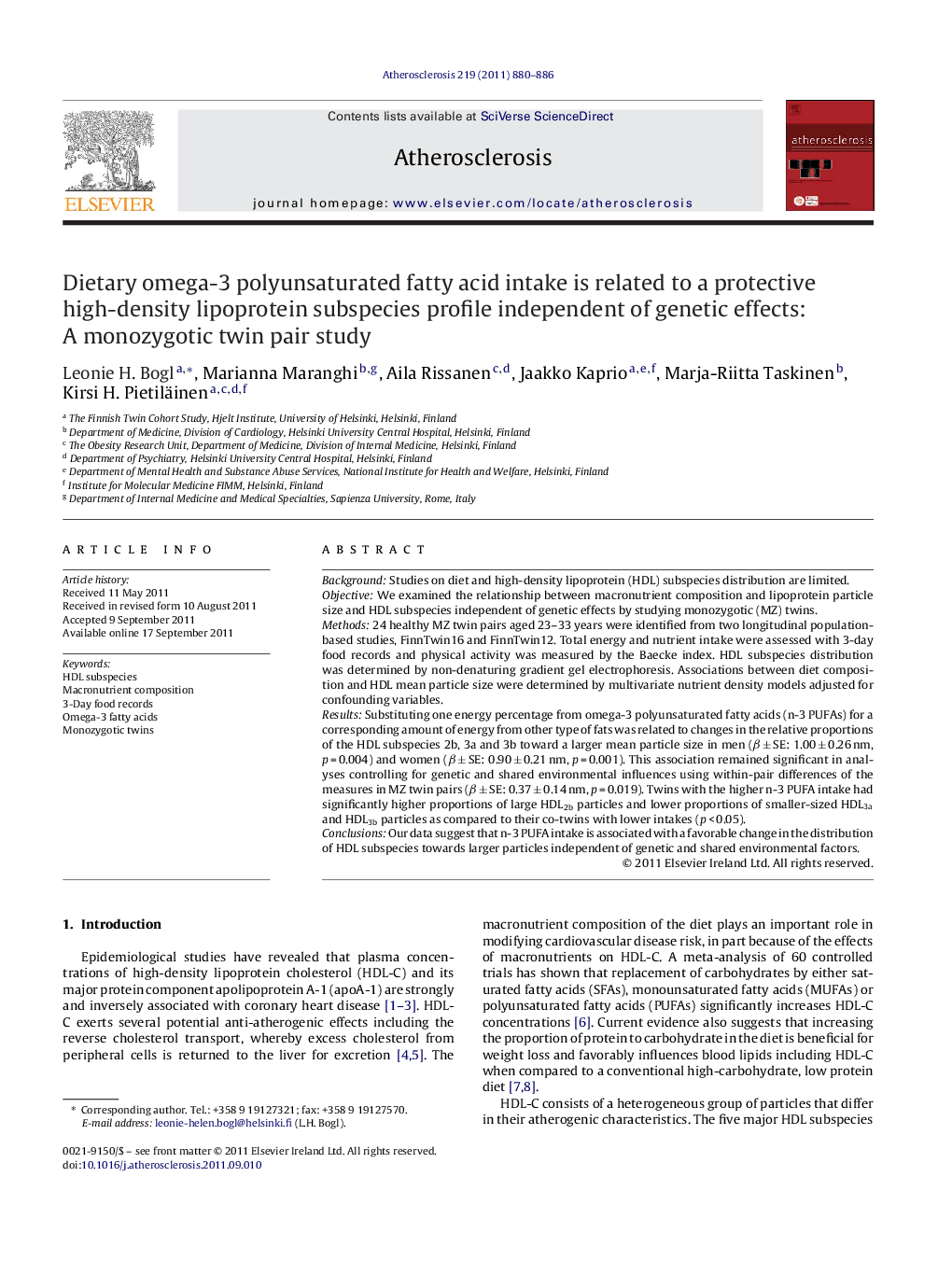| Article ID | Journal | Published Year | Pages | File Type |
|---|---|---|---|---|
| 5949400 | Atherosclerosis | 2011 | 7 Pages |
BackgroundStudies on diet and high-density lipoprotein (HDL) subspecies distribution are limited.ObjectiveWe examined the relationship between macronutrient composition and lipoprotein particle size and HDL subspecies independent of genetic effects by studying monozygotic (MZ) twins.Methods24 healthy MZ twin pairs aged 23-33 years were identified from two longitudinal population-based studies, FinnTwin16 and FinnTwin12. Total energy and nutrient intake were assessed with 3-day food records and physical activity was measured by the Baecke index. HDL subspecies distribution was determined by non-denaturing gradient gel electrophoresis. Associations between diet composition and HDL mean particle size were determined by multivariate nutrient density models adjusted for confounding variables.ResultsSubstituting one energy percentage from omega-3 polyunsaturated fatty acids (n-3 PUFAs) for a corresponding amount of energy from other type of fats was related to changes in the relative proportions of the HDL subspecies 2b, 3a and 3b toward a larger mean particle size in men (β ± SE: 1.00 ± 0.26 nm, p = 0.004) and women (β ± SE: 0.90 ± 0.21 nm, p = 0.001). This association remained significant in analyses controlling for genetic and shared environmental influences using within-pair differences of the measures in MZ twin pairs (β ± SE: 0.37 ± 0.14 nm, p = 0.019). Twins with the higher n-3 PUFA intake had significantly higher proportions of large HDL2b particles and lower proportions of smaller-sized HDL3a and HDL3b particles as compared to their co-twins with lower intakes (p < 0.05).ConclusionsOur data suggest that n-3 PUFA intake is associated with a favorable change in the distribution of HDL subspecies towards larger particles independent of genetic and shared environmental factors.
